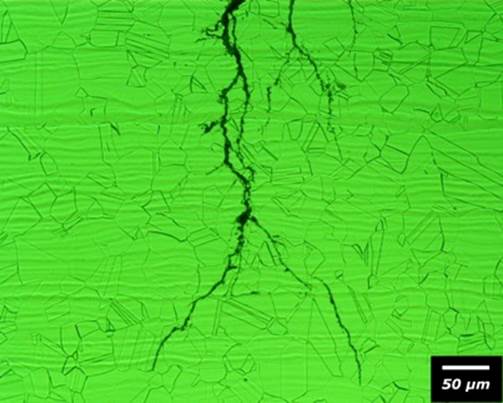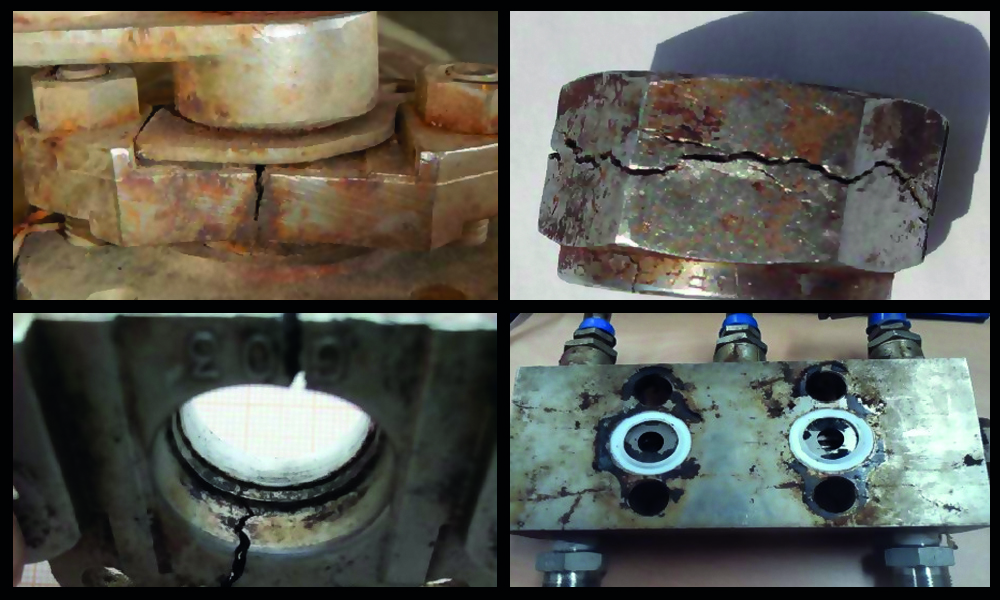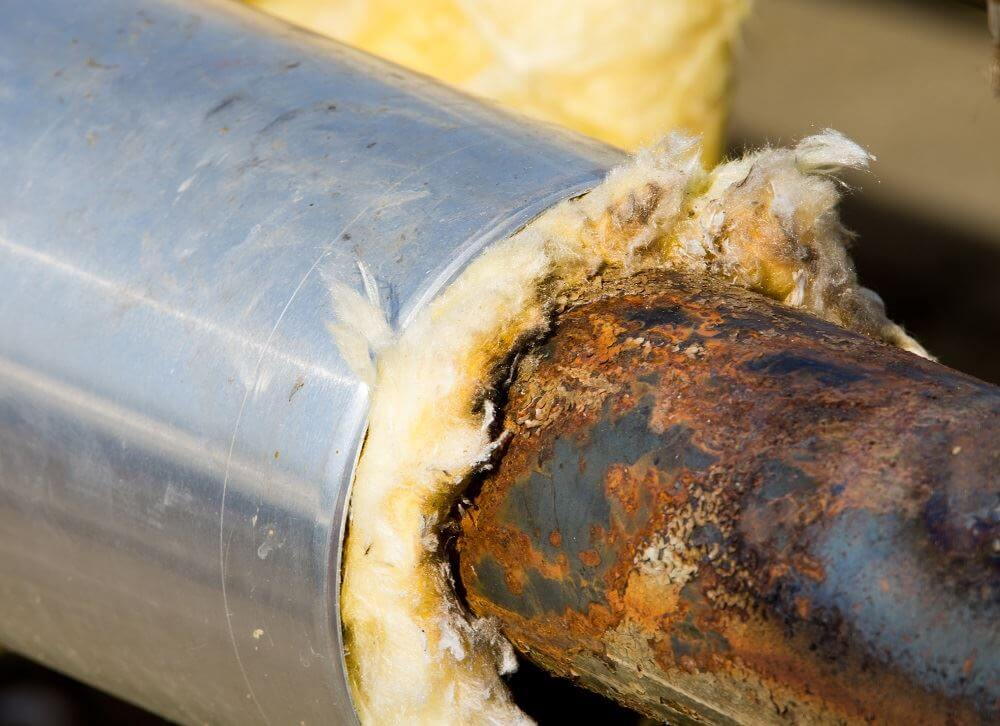Part
01
of one
Part
01
Chemical Industry Pain Points
Chloride stress corrosion cracking (CSCC) in austenitic stainless steel and corrosion under insulation (CUI) are two corrosion-based (or material-based) challenges for engineers and maintenance personnel working in the chemical and petrochemical industries. These problems are being faced by major chemical/petrochemical companies (mentioned in the ICIS Top 100 Chemical Companies list) like SABIC and Sinopec, respectively. Necessary research papers and industry articles have been presented as evidence that these two companies are facing the respective challenges.
Chloride Stress Corrosion Cracking (CSCC) in Austenitic Stainless Steel
- Stress corrosion cracking (SCC) is the cracking witnessed in materials due to the combination of a specific corrosive environment and high tensile stress. Chloride stress corrosion cracking (CSCC) occurs in austenitic stainless steels due to the combination of high temperature, high tensile stress, and the presence of chloride ions and oxygen.
- Research has proved that "austenitic stainless steels are sensitive for stress corrosion cracking by chlorides while carbon steels, ferritic and ferritic-austenitic (duplex) stainless steels are much better resistant against stress corrosion cracking by chlorides. This is because ferritic stainless steels have a ferritic structure with a body centered cubic (BCC) crystal lattice, whereas austenitic stainless steels have a face centered cubic crystal lattice, which is sensitive for chloride stress corrosion cracking because in this crystal lattice more easy shear occurs along the planes with a larger number of atoms." A typical appearance of CSCC as seen under a microscope is shown below.
- Austenitic stainless steels typically contain 19% Chromium and 9% Nickel by weight. The austenitic stainless steel grades that are most susceptible to CSCC contain nickel in the range of 8 to 10 by weight. "Therefore, standard grades such as 304/304L and 316/316L are very susceptible to this mode of attack. Austenitic grades with relatively high nickel and molybdenum content such as alloy 20, 904L, and the 6% molybdenum super austenitic grades have substantially better chloride SCC resistance."
- The essential external conditions to cause CSCC are high tensile stresses (both applied and residual), saline environments having high chloride content, and temperatures above 60°C (140°F). The following photographs illustrate CSCC in a few stainless steel components like machine parts and valves.
- During the phenomenon of CSCC, "the material is essentially unattacked over most of its surface, while fine and branch cracks develop into the bulk of material." Over a period of time, cracking can occur at stress levels much lower than the design stress levels and lead to catastrophic failure of the equipment and its structural elements. This can cause sudden discharge of chemicals, toxic substances, and stored energy leading to explosions and industrial accidents, shut-down of the plant, financial loss, safety concerns, and damage to property and the environment.
- Several research papers have discussed the subject of CSCC in detail. These papers can be accessed by clicking here, here, and here.
- Olin Corporation (#55 on the ICIS Top 100 Chemical Companies list) has published a manual that highlights the materials that can be used to safely handle allyl chloride without the hazardous effects of CSCC.
- Petrochemical plants located in the Arabian Gulf are particularly susceptible to CSCC due to severe environmental conditions like high temperature and humidity. Saudi Basic Industries Corporation, commonly known as SABIC (#5 on the ICIS Top 100 Chemical Companies list) is a chemical company that is suffering from the effects of CSCC, which can be understood from the results of research conducted at SABIC plants (the research papers can be accessed by clicking here and here).
Corrosion Under Insulation (CUI)
- "Corrosion under insulation (CUI) is a severe form of localized, external corrosion that most commonly occurs on insulated carbon and low alloy steel and stainless steel equipment." It occurs due to the buildup of moisture on the external surface of any insulated equipment. A photograph depicting a typical case of CUI is shown below.
- Even though "any type of corrosion can occur under insulation, the most common types of CUI are galvanic, chloride, acidic, or alkaline corrosion."
- According to API 570, the temperature range for CUI to occur in carbon steel piping is between 25 and 250°F, particularly in areas "where operating temperatures cause frequent or continuous condensation and re-evaporation of atmospheric moisture." Carbon steel piping that operate intermittently but at temperatures above 250°F are also at risk. CUI also occurs in environments that "provide airborne contaminants such as chlorides or SO2/SO3."
- Instances of "CUI can be found on equipment with damaged insulation, vapor barriers, weatherproofing or mastic, or protrusions through the insulation or at insulation termination points such as flanges; equipment designed with insulation support rings welded directly to the vessel wall; piping or equipment with damaged/leaking steam tracing; localized damage at paint and/or coating systems; and locations where moisture/water will naturally collect before evaporating and improperly terminated fireproofing."
- If left undetected and untreated, CUI can cause equipment or piping failure, prolonged downtime caused by repair or replacement of the damaged parts, catastrophic leaks resulting in explosions, and safety and environmental concerns. CUI is particularly challenging for engineers and maintenance personnel because it is insidious and "can remain undetected until the insulation is removed."
- China Petroleum and Chemical Corporation, popularly known as Sinopec Corp (#2 on the ICIS Top 100 Chemical Companies list) is facing serious CUI and corrosion concerns in its Jianghan Oilfield projects, which are "located in China’s Jianghan Plain in Hubei province." Hubei province has a sub-tropical monsoon climate that results in the seepage of moisture within the insulation of piping and equipment.
- In order to prevent CUI, Sinopec has used EonCoat, a spray applied Chemically Bonded Phosphate Ceramics (CBPCs) inorganic coating manufactured by Raleigh, a North Carolina-based company on two of its projects. "Visible in scanning electron microscope photography, EonCoat does not leave a gap between the steel and the coating because the bond is chemical rather than mechanical. Since there is no gap, even if moisture was to get through to the steel due to a gouge, there is nowhere for the moisture to travel. This effectively stops atmospheric corrosion and CUI on carbon steel assets."


